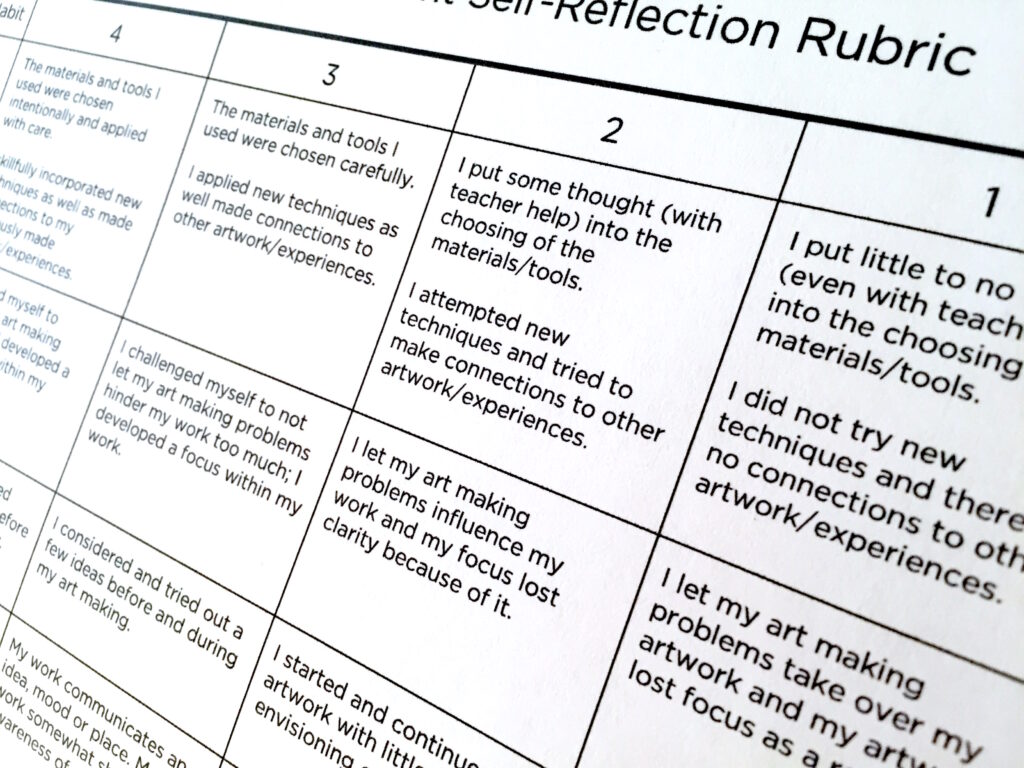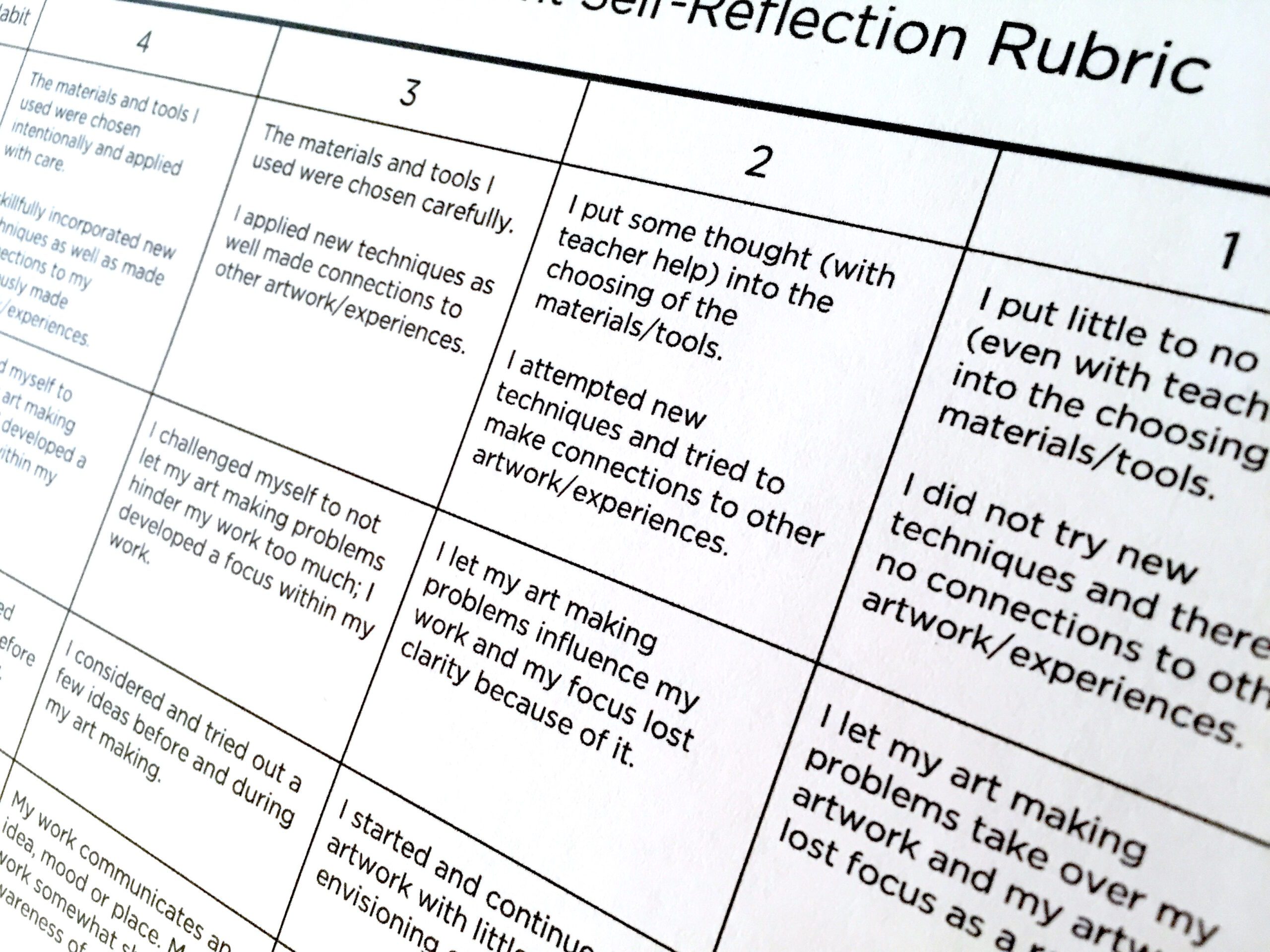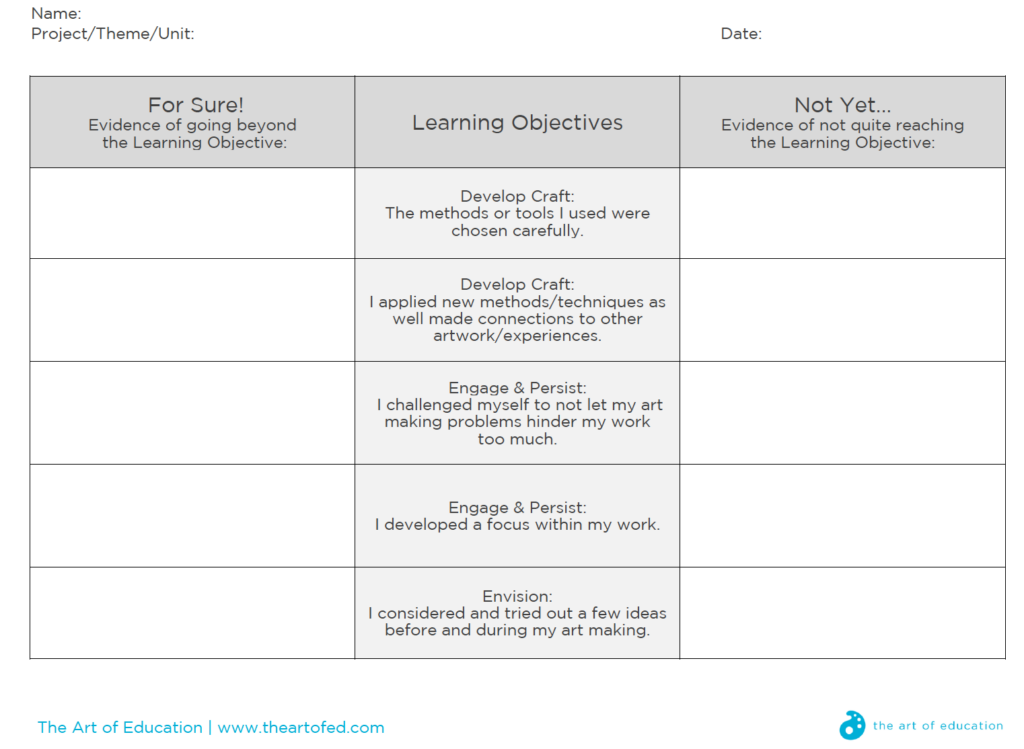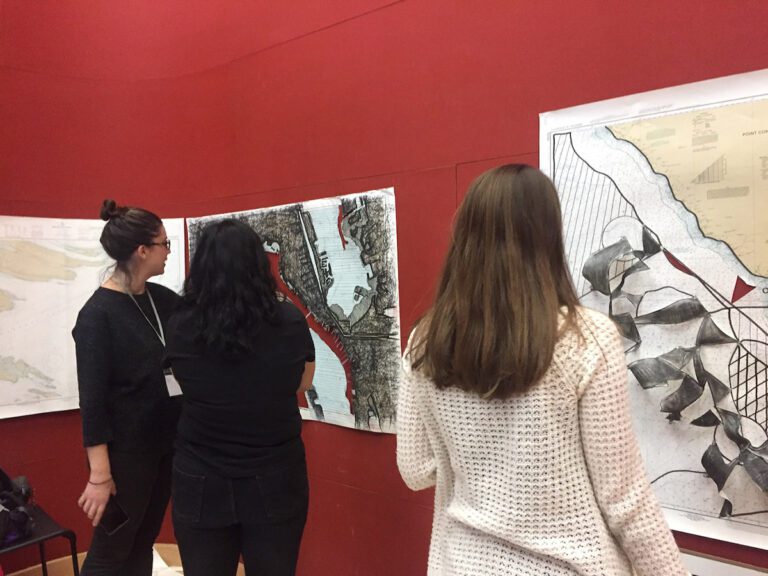Rubrics.
Is there really a clear cut way to efficiently and effectively use them in the art room? They are often too specific, too vague, undermine points for trivial things or just plain don’t work as a measurement for student growth in art. Many of us are used to analytic rubrics where we break down the criteria of a project into characteristics, or in many cases, specific learning goals or targets presented in the lesson.
These types of rubrics tend to use a grid of 4 or 5 learning targets with various levels of growth listed across the top. They are complex, detailed and in reality, seldom read by students. The feedback they intend to provide is ignored by students because its feels impersonal and conforming.
So, why then, do we punish ourselves with creating them and punish our students by cramming their growth into limiting, specific boxes?

If your answer to these questions is anything like mine, it’s because we feel we have to use measurements like this. We may be encouraged by administration to grade our students with rubrics, even when our craft does not fit neatly into precise and definite boxes. Is there a better way? We need something that feels right for us as art teachers, is accepted by administration, and most importantly, gives our students the personalized and direct feedback they need to grow. If you are looking for that something, the single-point rubric may be your answer.
I recently discovered this idea from The Cult of Pedagogy blogger Jennifer Gonzalez. As a former English teacher herself, she’s experienced the same frustrations in her classroom and toyed with the idea of cutting out all the unnecessary detail within rubrics by simplifying down to just listing the objectives. This allows for areas of concern and excellence to be open-ended and personalized to individual students’ needs. A single-point rubric is an assessment that fits the levels of choice within art rooms but still provides students with the learning targets of the current project, theme, or unit.
Below is an example I’ve used recently with my middle school students. I highlighted three Studio Habits as my learning targets for our unit and this format easily allowed me to share the objectives clearly with my students as we progressed through our work. I can use this rubric as a student self-assessment tool, a student conference guide or more traditionally as an assessment rubric for my students to receive feedback provided by myself or better yet, a peer reviewer.
You might be wondering how using alternative assessments such as a single-point rubric can translate into actual grades. With so many variations of grading requirements throughout districts, it’s not something that can be determined quickly through an article. That’s where AOEU’s Assessment in Art Education course can be a critical component of your assessment plan. In this course, you’ll design a plan based on what works for your art room and your philosophy. Not only will you learn to use assessments to validate your program, but you’ll discover the benefits and challenges of using various tools to better capture authentic measurements of student growth and evidence of learning. Find out more here.
What are some ways you’ve improved rubric use in your art room?
What is the most effective and authentic way you grade students?
Magazine articles and podcasts are opinions of professional education contributors and do not necessarily represent the position of the Art of Education University (AOEU) or its academic offerings. Contributors use terms in the way they are most often talked about in the scope of their educational experiences.






